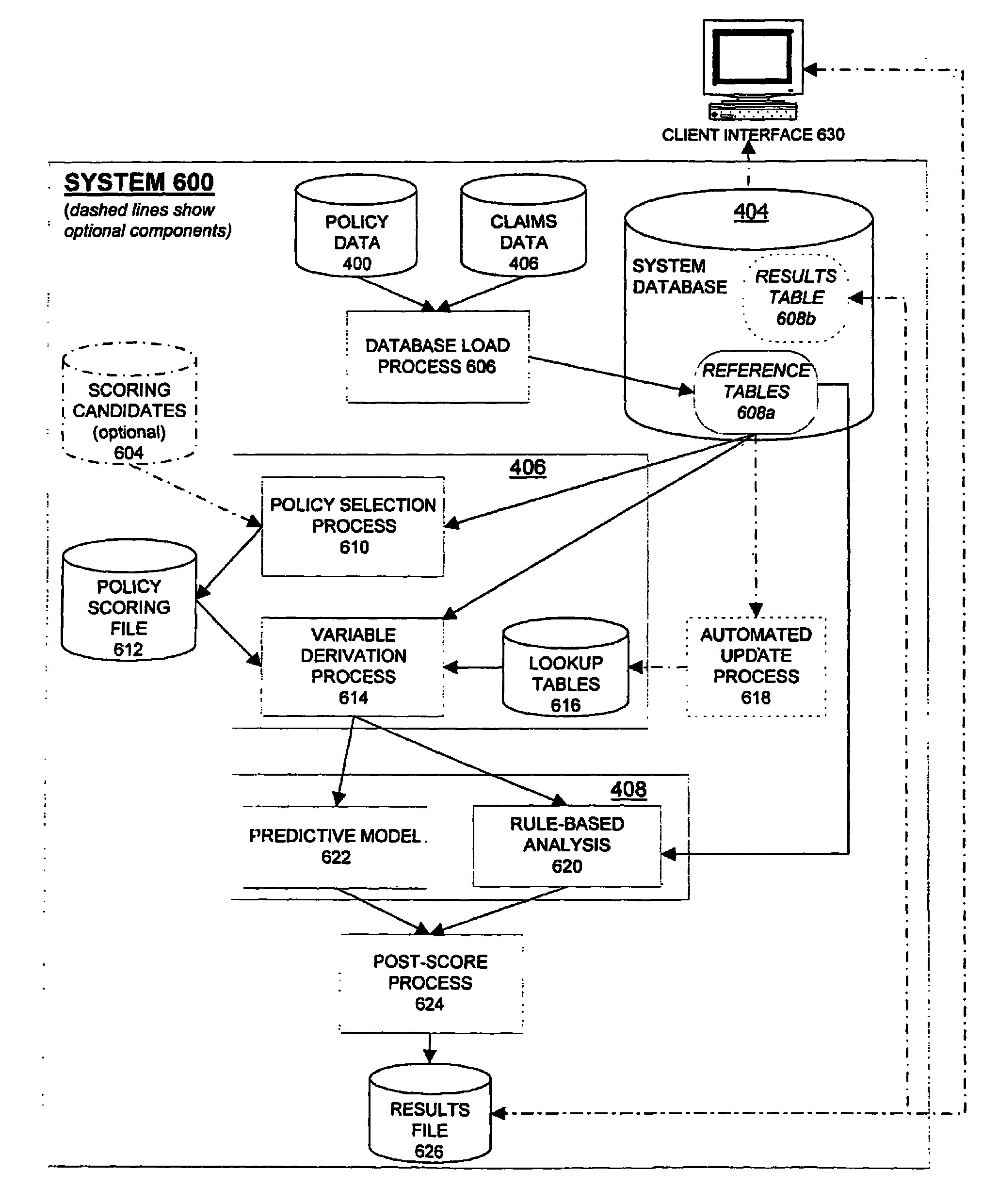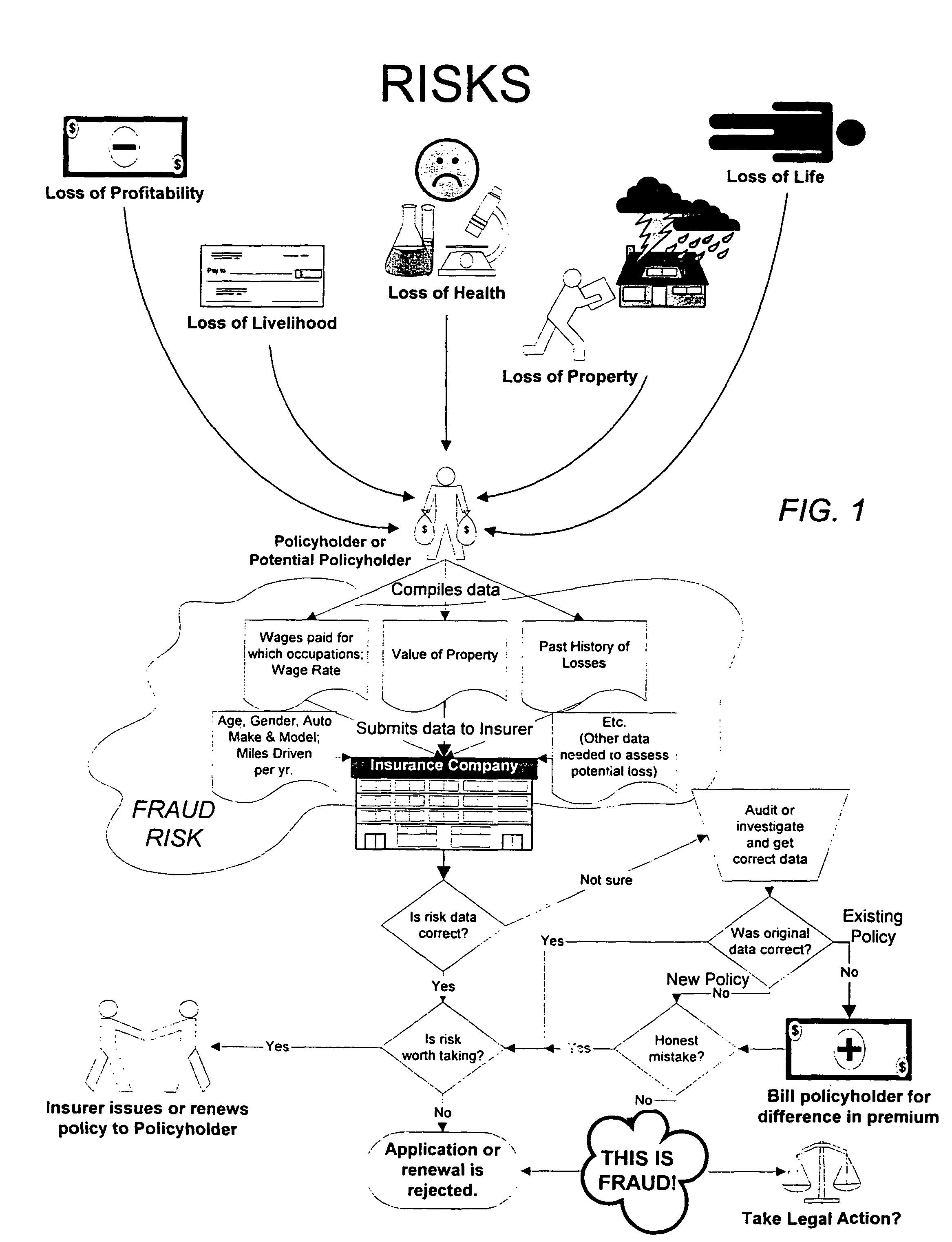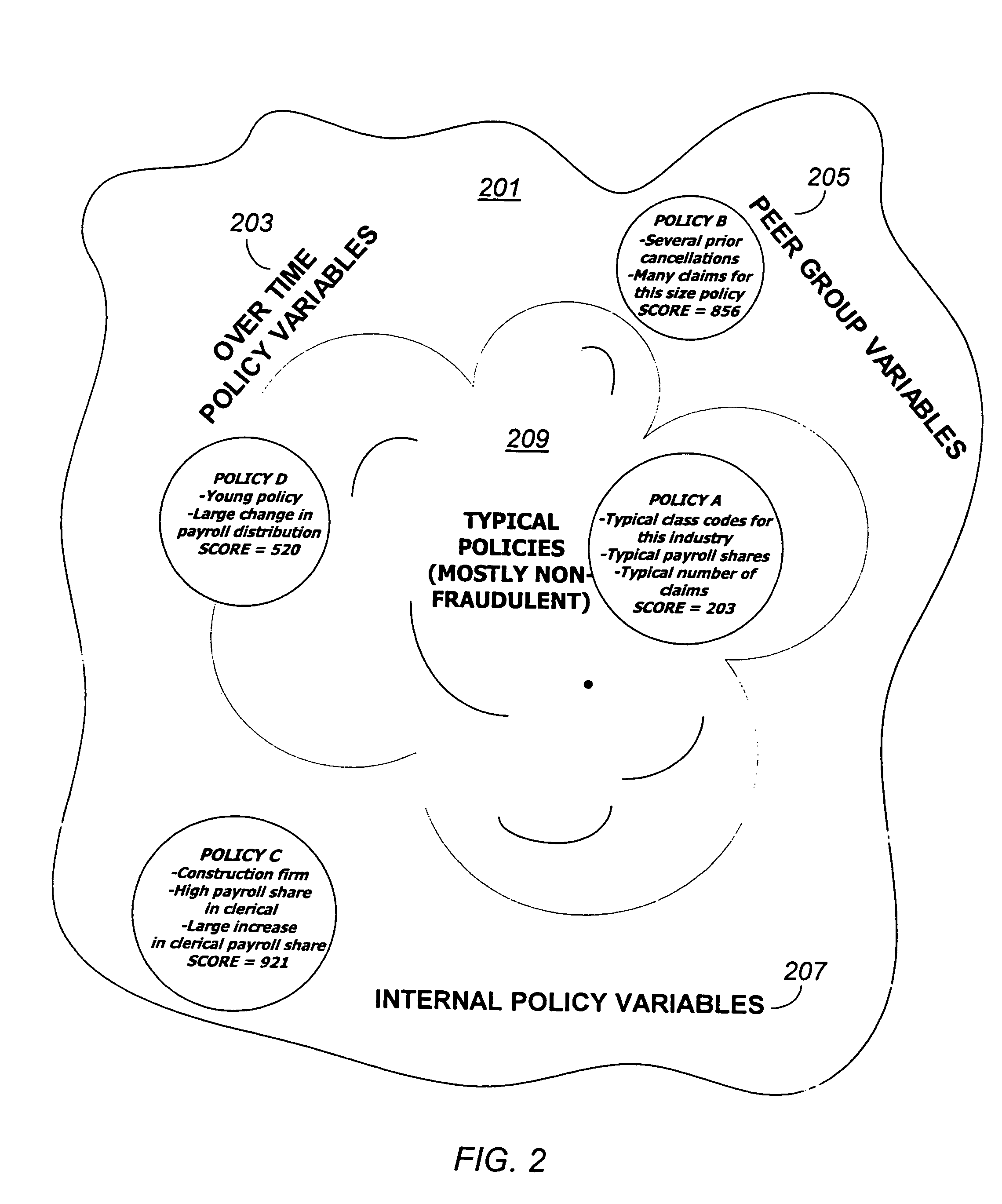Detection of insurance premium fraud or abuse using a predictive software system
a software system and insurance premium technology, applied in the field of detection of insurance policyholders, can solve problems such as high complexity of patterns
- Summary
- Abstract
- Description
- Claims
- Application Information
AI Technical Summary
Benefits of technology
Problems solved by technology
Method used
Image
Examples
Embodiment Construction
A. Functional Description of a Premium Fraud and Abuse Detection System
B. Example of Premium Recovery Results
C. Software Architecture
[0072]1. DATABASE LOAD PROCESS
[0074]3. POLICY SELECTION PROCESS
[0075]4. POLICY SCORING FILE
[0076]5. VARIABLE DERIVATION
[0077]6. LOOKUP TABLES
[0078]7. PREDICTIVE MODEL
[0079]8. MODEL SCORE EXPLANATIONS AND REASON CODES
[0080]9. RULE-BASED ANALYSIS
[0081]10. POST-SCORING PROCESS
[0082]11. RESULTS TABLE
D. Usage Strategies
E. Development of the Predictive Model
[0083]1. THE MODEL DEVELOPMENT ENVIRONMENT
[0084]2. DATA PREPROCESSING
[0085]3. SAMPLING PROCEDURE
[0086]4. TAGGING PROCEDURE
[0087]5. VARIABLE DESIGN [0088]a) Policy vs. Claim Variables[0089]b) Direct Variables[0090]c) Peer Group Variables[0091]d) Over-Time Variables
[0092]6. VARIABLE SELECTION
[0093]7. VARIABLE DERIVATION
[0094]8. TEST / TRAIN SPLIT
[0095]9. SEGMENTATION
[0096]10. MODEL TRAINING
F. Alternative Embodiments
Appendix A. Specifications of System Data Tables
[00...
PUM
 Login to View More
Login to View More Abstract
Description
Claims
Application Information
 Login to View More
Login to View More - R&D
- Intellectual Property
- Life Sciences
- Materials
- Tech Scout
- Unparalleled Data Quality
- Higher Quality Content
- 60% Fewer Hallucinations
Browse by: Latest US Patents, China's latest patents, Technical Efficacy Thesaurus, Application Domain, Technology Topic, Popular Technical Reports.
© 2025 PatSnap. All rights reserved.Legal|Privacy policy|Modern Slavery Act Transparency Statement|Sitemap|About US| Contact US: help@patsnap.com



